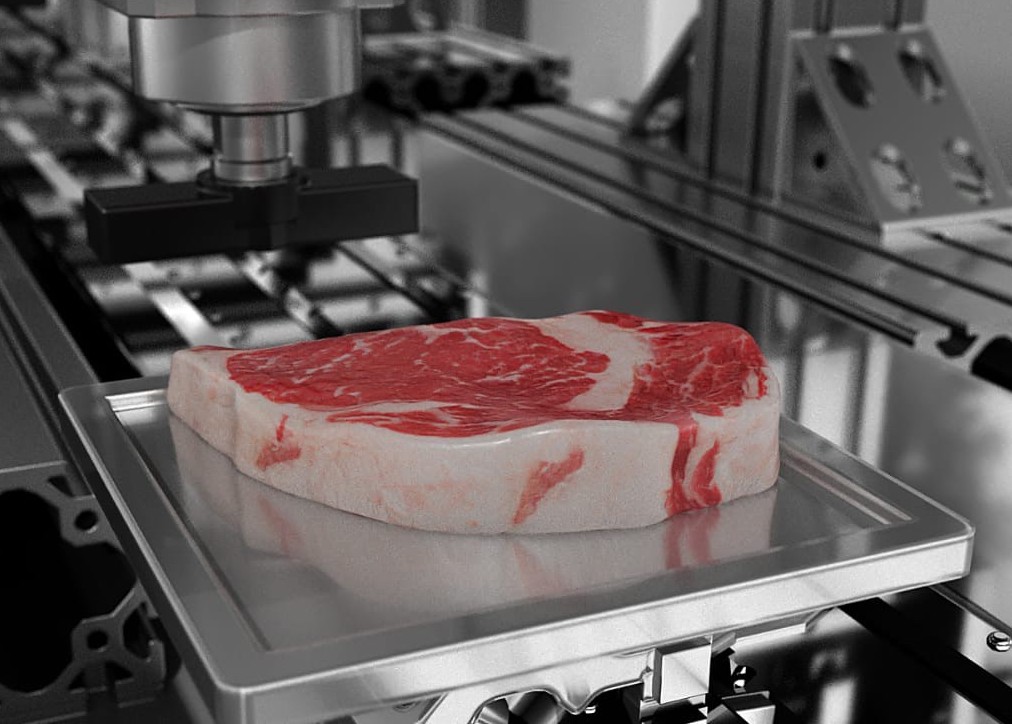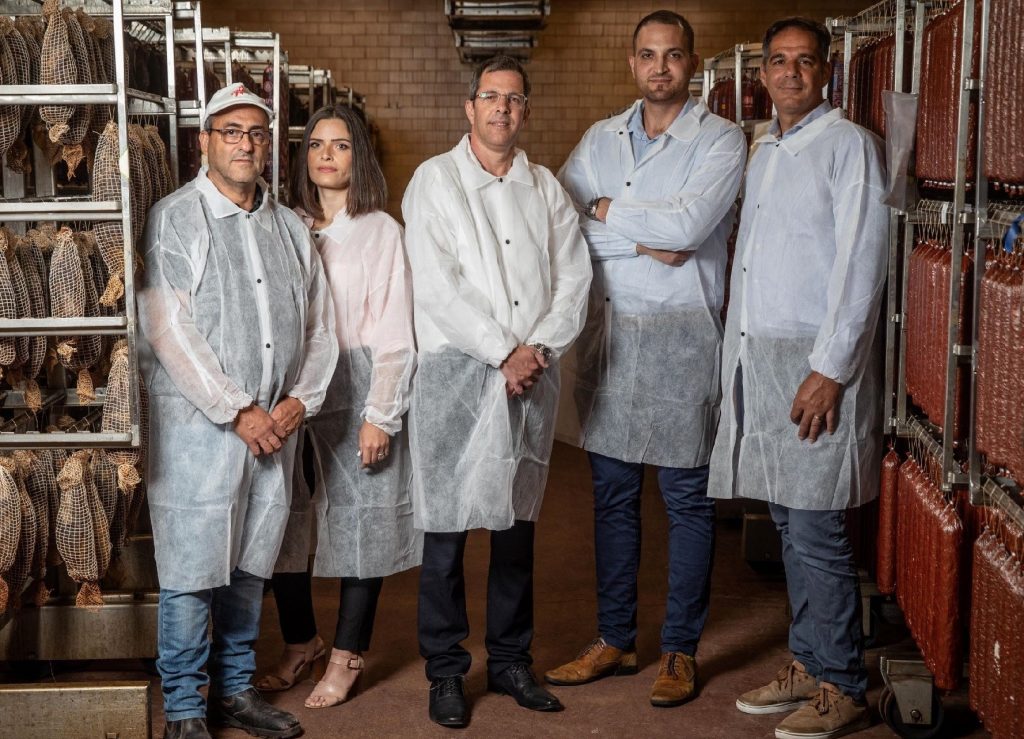The nominations for the 2021 3D Printing Industry Awards are now open. Who do you think should make the shortlists for this year’s show? Have your say now.
Meat 3D bioprinting specialist MeaTech has revealed that it intends to enter premarket comestible production next year within its H2 2021 financial results.
Using the technologies gained from its $18 million Peace of Meat acquisition in December 2020, MeaTech now aims to establish a Belgian pilot plant, and enter chicken fat production during 2022. The company has also begun research into the best way of scaling the 3D bioprinting of pork cells, and if this can be achieved successfully, it believes this could “significantly expand its addressable markets.”
Elsewhere, using its cultured fat, the firm’s newly-established MeaTech Europe subsidiary has begun research into creating hybrid foodstuffs, composed of both plant and cultured meat ingredients. The products are being designed specifically to cater for potential vegetarian clients, and to offer a more nutritious meat alternative than purely plant-based meat substitutes.
MeaTech traded publicly on the Tel Aviv Stock Exchange until August 2021, but it has now been delisted and become the first cultured meat-focused business to trade on the Nasdaq instead. Since the firm formally unveiled its latest advances, its shares have fluctuated, first dipping 23% from $0.75 to $0.58 before recovering 28% to $0.74 in premarket trading.
“During the first half of 2021, we expanded our bovine and avian cell product lines, and initiated research and development activities for cultured porcine cell technologies,” said Sharon Fima, CEO of MeaTech. “Establishing MeaTech Europe, which is initially focusing on hybrid foods, also lays the company groundwork for further development of cultured meats.”
“We are thrilled with our progress so far in 2021 and are excited to continue developing our capabilities.”

MeaTech’s H1 2021 financials
Currently, MeaTech describes itself as being an “early-stage company” that’s in an active-investment stage of development, thus it doesn’t generate revenue as such, although it has now fully-integrated its new Belgian subsidiary, so its somewhat limited financials do include any assets absorbed via the incorporation of Peace of Meat as well.
With this in mind, the company’s total assets grew from $18 million at the end of FY 2020 to $46 million as of June 30 2021, while its non-current assets rose from $4 million to $14 million during the same period. To acquire these assets, MeaTech spent just over $6 million on investment activities during H1 2021, in addition to a further $5 million on operating costs, culminating in an total loss of $8 million.
According to the firm, this overall loss was mainly due to an increase in its R&D expenses from $0.9 million to $2.1 million between H1 2020 and H1 2021, as well as admin costs of $4 million. However, despite its rising expenditure MeaTech remains in a strong cash position, and it had more than $30 million left of its total $44 million funding raised by the end of Q2 2021.

Beefed-up expansion plans
On an earnings call with analysts and MeaTech investors, the firm’s Co-founder & Deputy CEO Omri Schanin, explained that the company’s strategy was threefold: building on its capacity, 3D bioprinting multispecies products and producing non-printed hybrid foods, and that it had made significant progress in each of these areas throughout H1 2021.
Early in the year, the company raised $28 million via its IPO on the Nasdaq Capital Market, as well as completing its acquisition of Peace of Meat. The latter deal has seen MeaTech add new avian meat products to its portfolio, which it expects to be able to market to those food processing firms looking to add more meatiness to their plant-based offerings.
In terms of the company’s own R&D efforts, it filed a U.S. patent for a novel 3D bioprinting technology in June 2021. MeaTech says that its approach “provides exceptional bio-ink control” during multi-layered production, thus it could enable the creation of premium meat substitutes with a higher level of resolution than is currently possible.
As part of its strategy to develop a broad cellular agriculture offering, the firm has also begun researching pork bioprinting technologies, and signed a non-binding letter of intent with food retailer Tiv Ta’am. Working with the Israeli meat producer, MeaTech aims to initially conduct joint research, before sharing in the production, marketing and distribution of food-related goods.
“We intend to continue leveraging our 3D bioprinting technologies, which we believe to be the optimal technology to create structured meat tissues, such as steaks, under lab conditions,” concluded Fima. “We believe that developing additional cultured meat product lines has the potential to expand our addressable markets, generating additional revenue potential.”
“Our goal is to lead the upcoming agricultural revolution by making tomorrow’s meat safe, abundant and sustainable.”

AM’s burgeoning meat market
Over the last year, 3D bioprinted meats have come on leaps and bounds, making them more appealing to diners, and their manufacturers a tasty proposition for investors. Last year, Israeli food bioprinting firm SavorEat, managed to capture the imaginations of investors when it went public on the Tel Aviv Stock Exchange, raising $13 million in funding.
Redefine Meat has also attracted investment with its 3D printed animal-free meat, raising $29 million in funding to back its wider commercial launch, in February 2021. Using the rest of its newly-raised capital, the firm plans to expand on its portfolio and make a push towards its broader goal of becoming the world’s biggest alternative meat company by 2030.
Over in Spain, Barcelona-based Novameat has announced plans of its own to launch 3D printed plant-based ‘steaks’ on the open market. The company reportedly intends to sell its alt-meat products, which are specifically designed to mimic the texture of beef or pork, to consumers and restaurants during 2022.
The nominations for the 2021 3D Printing Industry Awards are now open. Who do you think should make the shortlists for this year’s show? Have your say now.
To stay up to date with the latest 3D printing news, don’t forget to subscribe to the 3D Printing Industry newsletter or follow us on Twitter or liking our page on Facebook.
For a deeper dive into additive manufacturing, you can now subscribe to our Youtube channel, featuring discussion, debriefs, and shots of 3D printing in-action.
Are you looking for a job in the additive manufacturing industry? Visit 3D Printing Jobs for a selection of roles in the industry.
Featured image shows a MeaTech 3D printed steak. Image via MeaTech.



